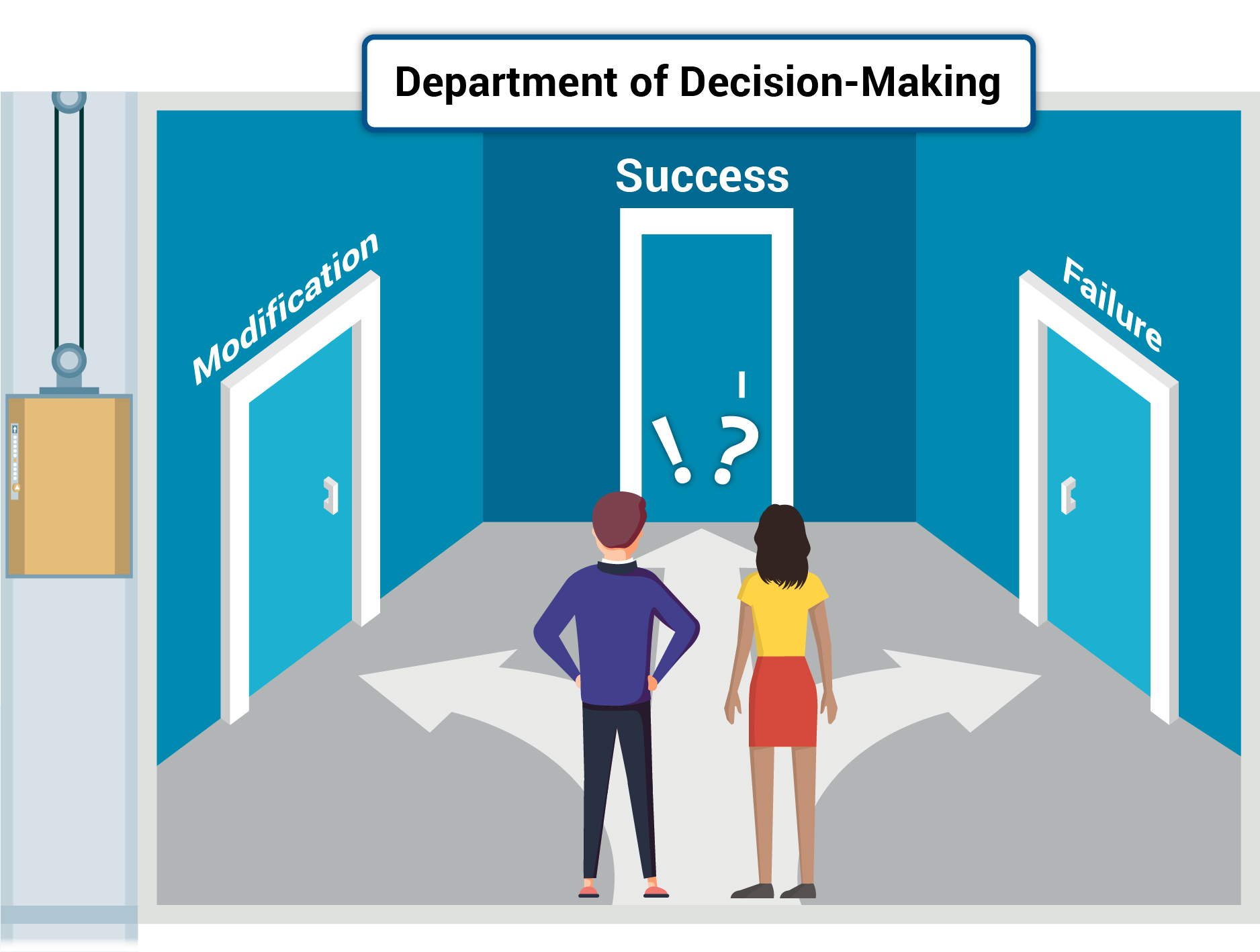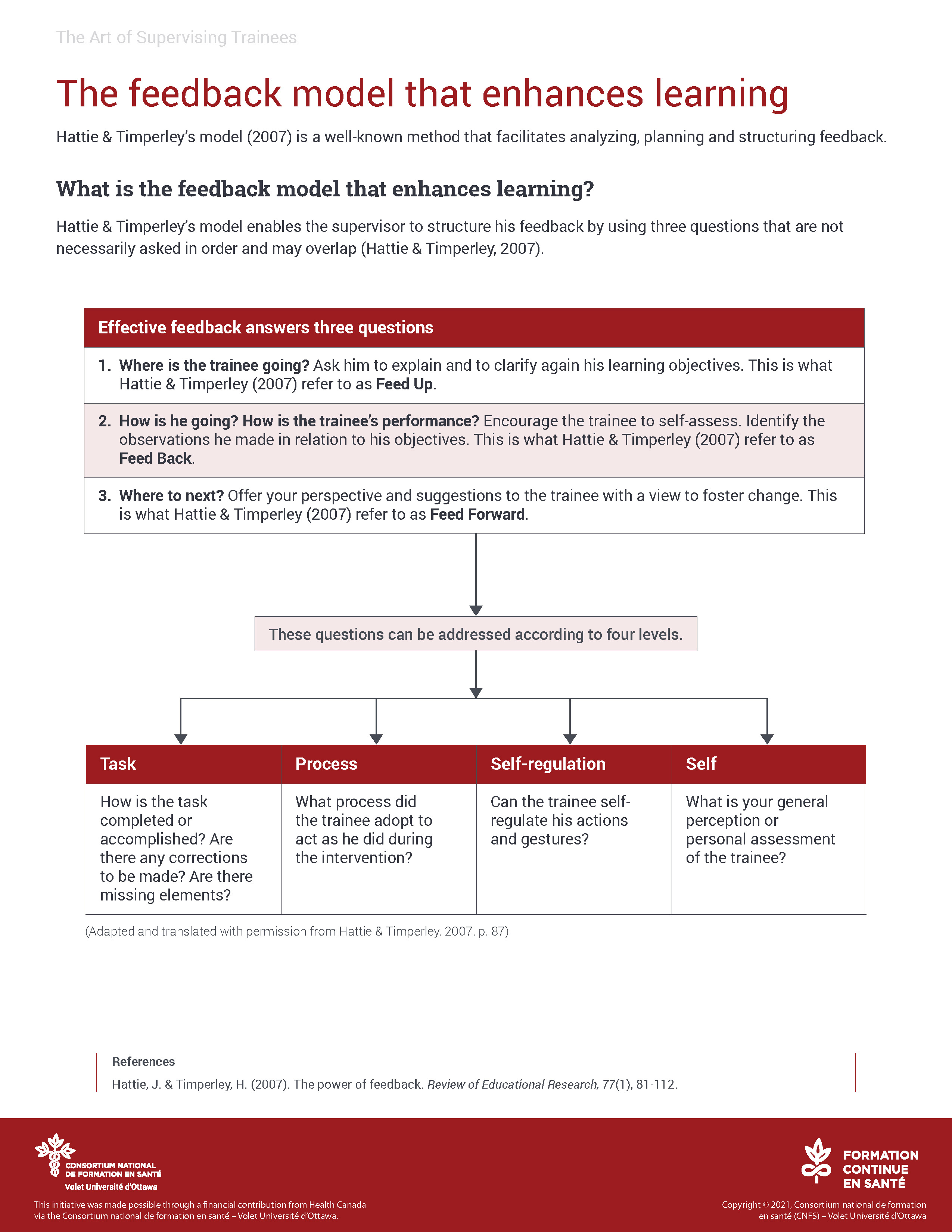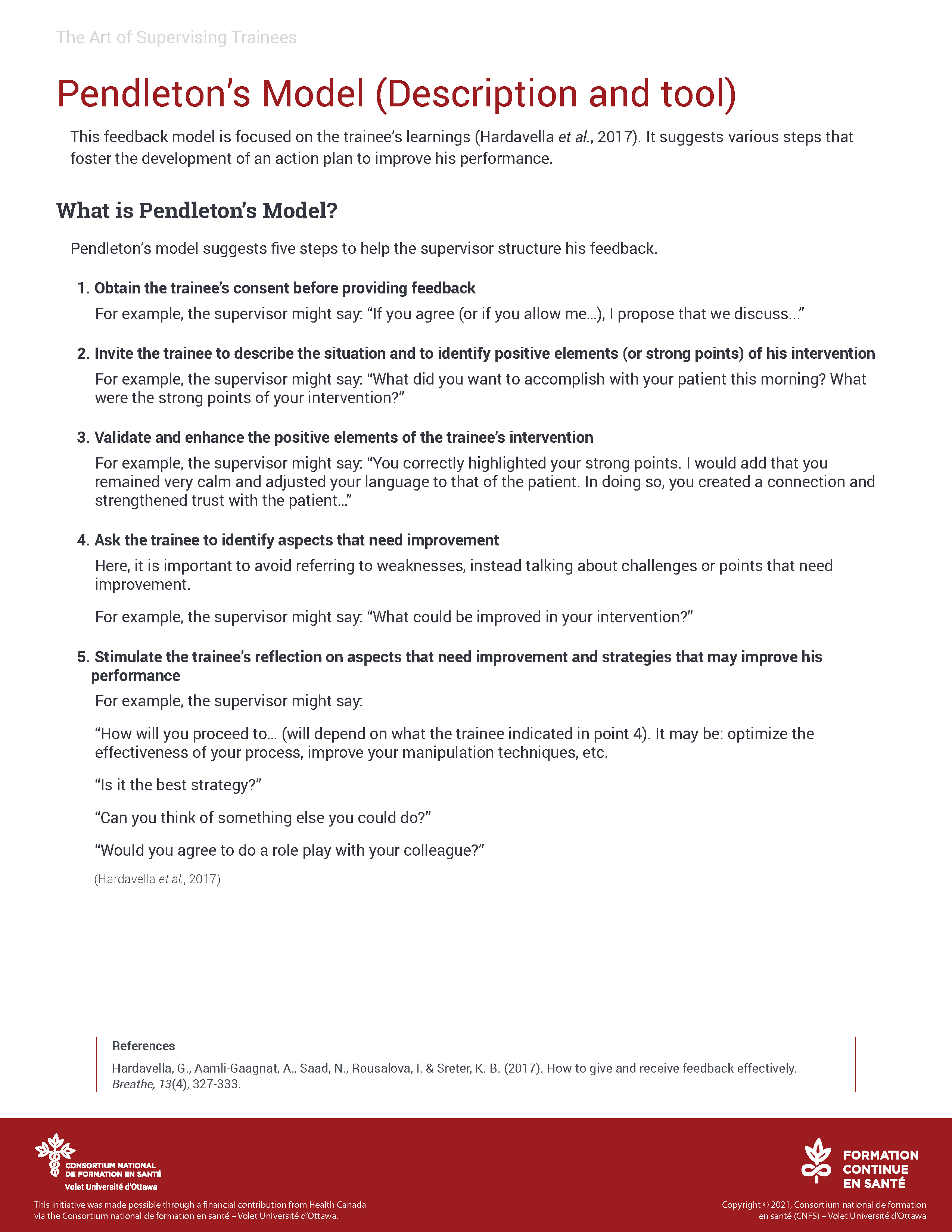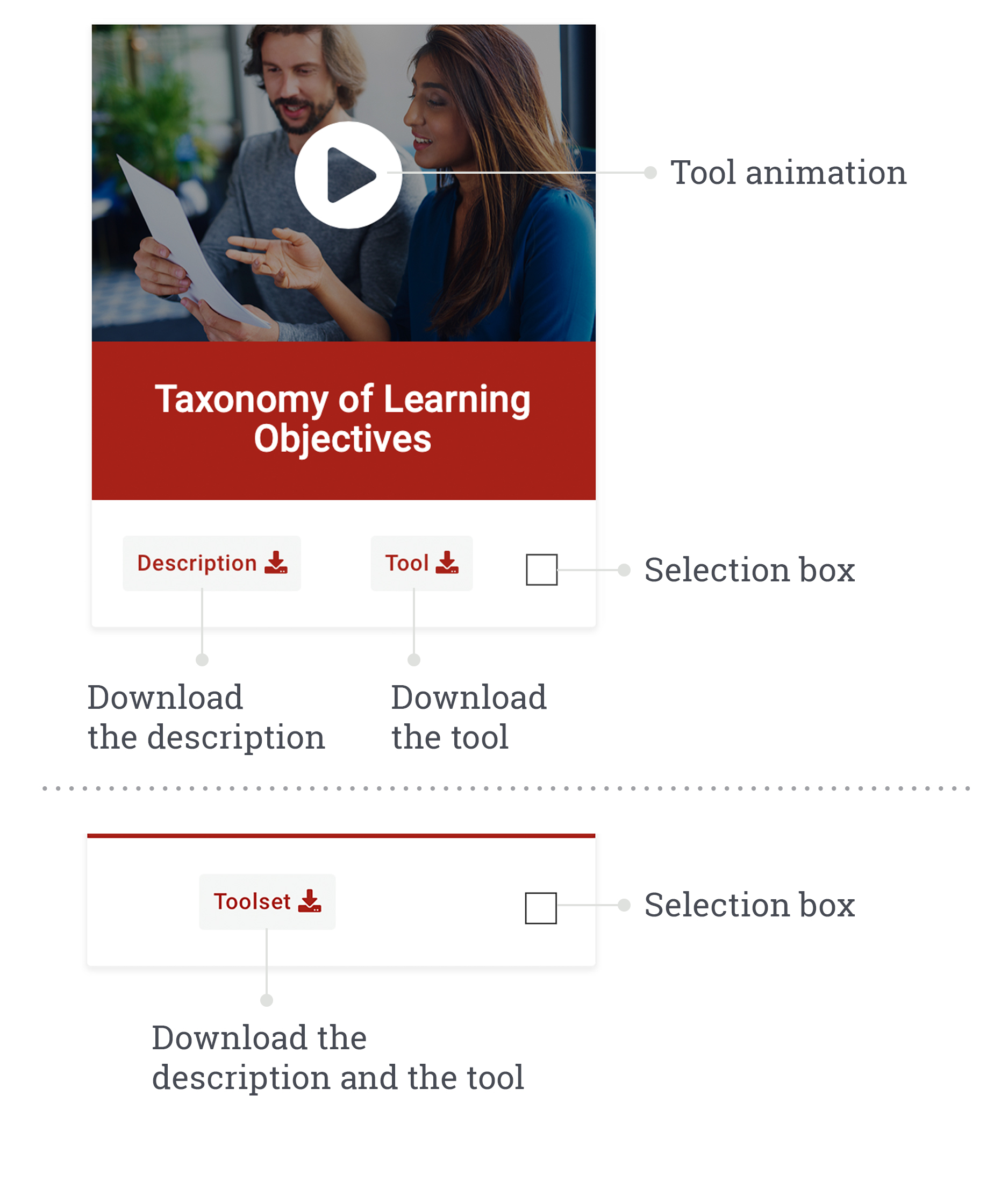UNIT 6
Decision-making: a key step in the assessment process
Orientation to Unit 6
In this unit, you will explore the decision-making step. You will see how a decision based on a formative assessment differs from a decision grounded on a summative assessment. Suggestions will also be offered to help you deal with assessing problem trainees.
Decision-making
Introduction to decision-making
You are now ready to complete the last step in the assessment process: decision-making. This step:
- Is central to the assessment process
- Is decisive with regards to the placement progress
- Constitutes the “finality of the assessment process”
This unit will first deal with formative assessment and, at the very end, with summative assessment.
Generally, decision-making is of a pedagogical nature, when the assessment targets learning (assessment for learning) or administrative, if it takes place after the learning (assessment of learning). In some instances, the summative assessment of learning is also pedagogical, with a view to fostering learning in the next placement.
Decision-making based on formative and summative assessments
Decision-making based on a formative assessment: to improve learning
Initially, decision-making deals with formative assessment. It takes into account key elements discussed with the trainee as the supervisor gave him feedback. In addition, it allows the supervisor to gauge the congruence of assessment modalities related to the trainee’s learning objectives as defined at the planning step of the assessment.
The supervisor adapts his support strategies according to the trainee’s needs and challenges. In some cases, the supervisor will decide to review how he supports the trainee in order to bring him to achieve his competencies.
For example, the supervisor may:

- Give feedback to his trainee more frequently
- Conduct assessments at different moments of the day or week

- Optimize preparation time for his trainee by giving him access to a quieter room, reducing distractions; this adjustment will improve concentration

- Encourage his trainee to take notes or to record important information following the feedback he received

- Change or diversify his methods for collecting information (covered in Unit 3)

- Review expectations
- Etc.
Changes or adjustments proposed at this step should be recorded in the learning contract.
Decision-making based on a formative assessment can lead the supervisor to revisit the planning step of the assessment. In that case, the supervisor continues the assessment process, adjusting his methods for collecting information. Going back and forth between planning and collecting information is beneficial, and it reflects the trainee’s progress in learning and developing his competencies.
Decision-making based on a summative assessment: to measure learning!
At the end of the placement, decision-making is associated with a summative assessment. It will include key elements discussed with the trainee as he received feedback. More specifically, it will:

- Validate the achievement of pedagogical objectives and level of competence against predefined criteria
- Identify future learning needs
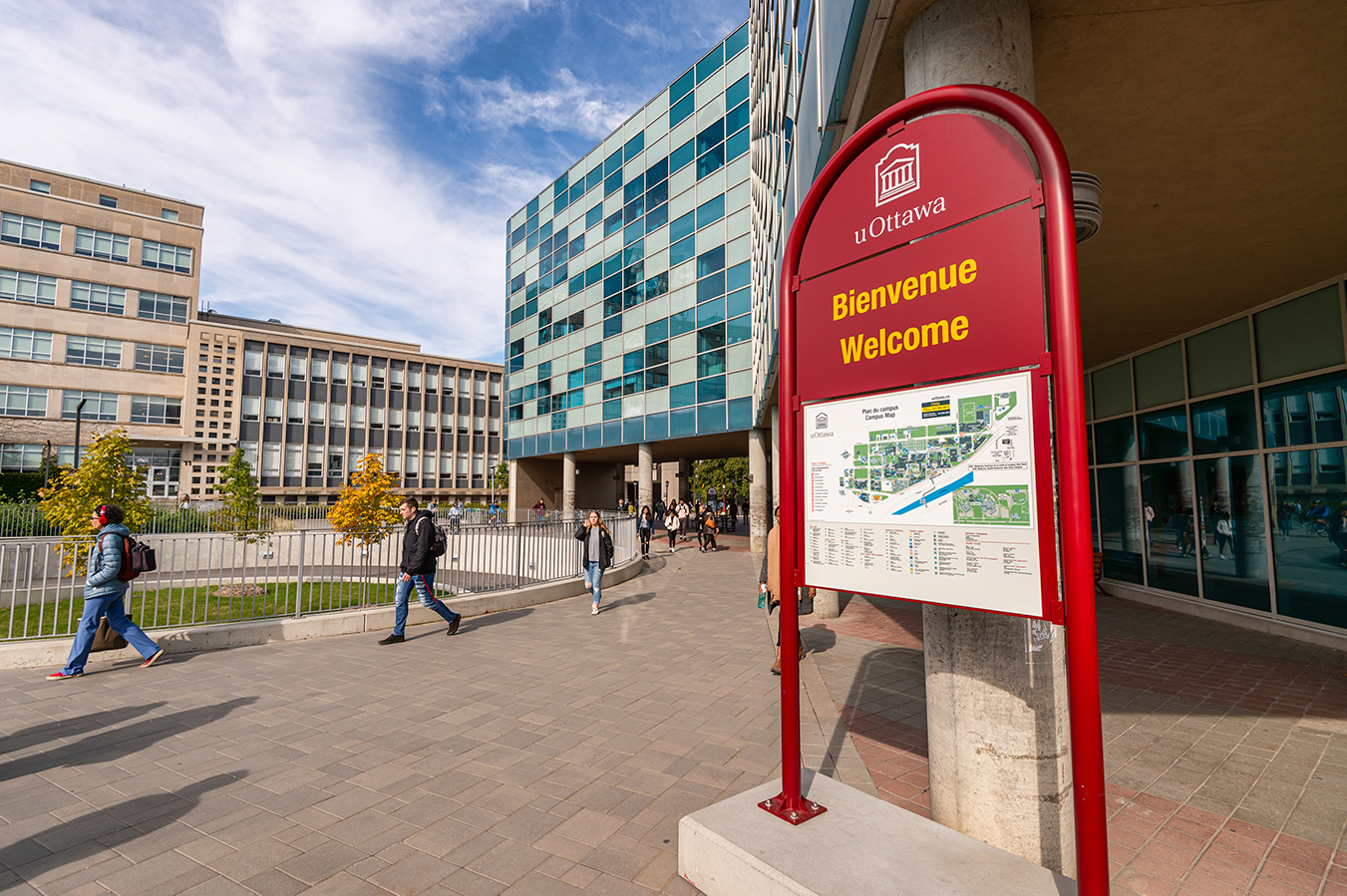
- Inform the academic setting that the trainee’s placement was a success, a failure or that changes need to be made
- Assign a grade (in the form of a number, letter, rate or mark)
Reflection question
info_outline Instructions:
- Answer questions in the textbox below.
- Click on “Save” to keep your answers.
During a summative assessment, at the end of the placement, decision-making by the supervisor will depend on the requirements of the profession and academic setting.
This decision can lead to different situations:
Decision-making leading to different situations
info_outline Instructions:
- Click on each door to see the video capsule they contain.
- View the videos.
- To close, click outside of the video.
Video – Decision-making in the context of a summative assessment: option 1
Video – Decision-making in the context of a summative assessment: option 2
Video – Decision-making in the context of a summative assessment: option 3
Obviously, it is easier to make a decision based on a summative assessment when the trainee is successful. The two other situations require more preparation and adjustments, because the supervisor is dealing with a trainee that shows poor clinical abilities and inadequate performance.
The challenges of decision-making when assessing a problem trainee
Between 5 and 15% of students in training programs are problem trainees. So, among a cohort of 50 students, between two to eight will be problem trainees. Although this statistic results from targeted studies, it probably reflects what you have already observed in your program.
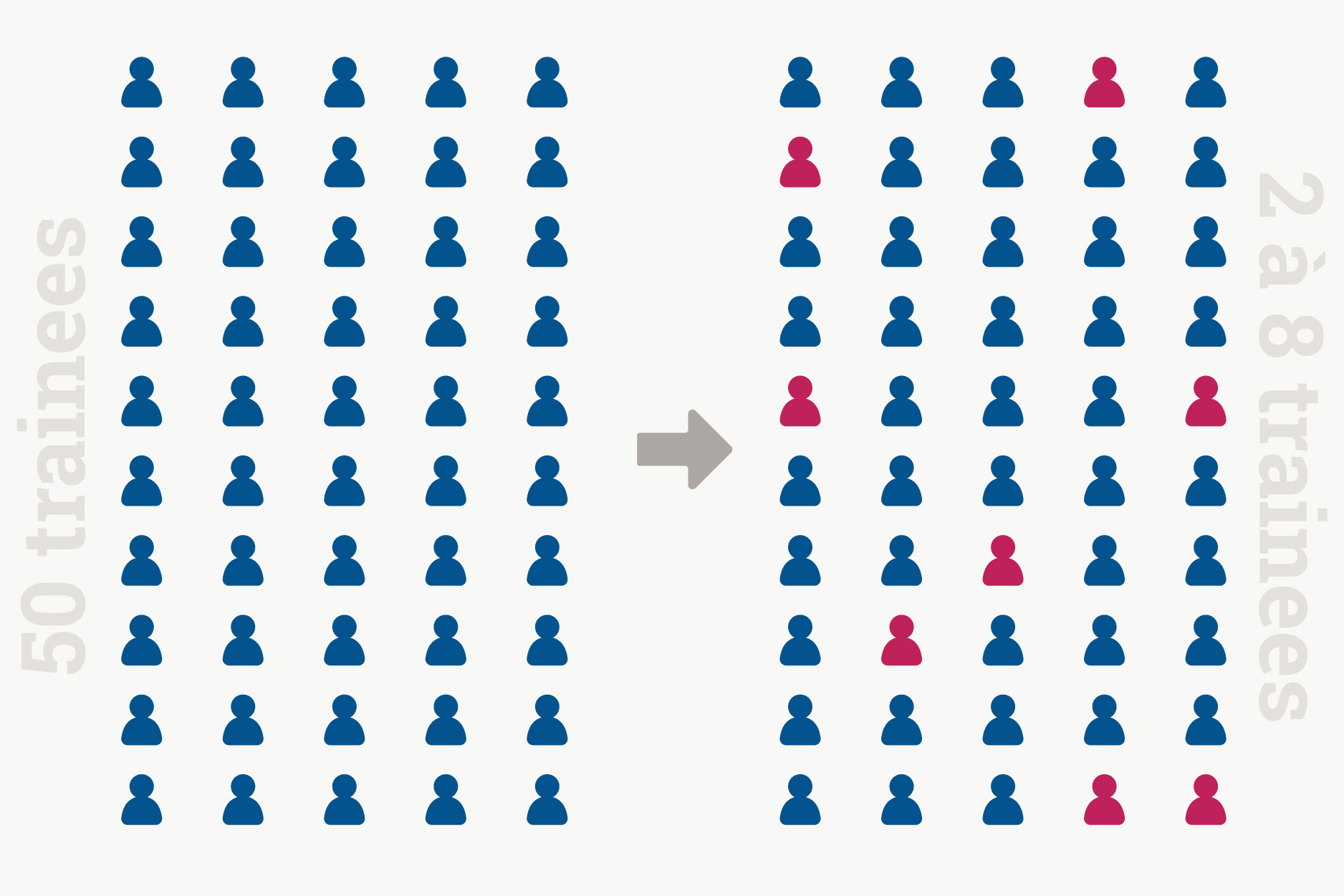
When assessing problem trainees, decision-making can become quite a challenge!
In fact, the supervisor who makes a decision related to a problem trainee tends to question his judgement. He wonders whether he is too strict or unfair. It may happen that a feeling of guilt emerges when he cannot see progress in his trainee.
When a trainee does not achieve his learning objectives, it should not be perceived as reflecting inadequate support from the supervisor. On the contrary, the supervisor should see the assessment as a helping hand, fostering the trainee’s reflection about his performance and the knowledge he has acquired with a view to rethinking his path.
Not all trainees have the abilities to become competent professionals in a particular discipline. It is useful to provide the trainee with opportunities to explore alternative career choices, other avenues and possibilities. It is preferable that this situation occurs sooner than later in the trainee’s journey.
A few suggestions to facilitate decision-making with a problem trainee
It will always be difficult for a trainee to realize that he doesn’t meet expectations, that he doesn’t achieve learning objectives and that he is facing failure. However, the following suggestions will ensure that the assessment interview goes as well as possible.
info_outline Instructions: Click on the symbol to read a few suggestions to help you deal with a problem trainee.

1.
As soon as possible, help the trainee identify the issues he will need to work on. The trainee can set an objective and action plan with his supervisor. This plan would include strategies and resources required to achieve the objective. The trainee must be actively involved in implementing this plan.
2.
Explain to the trainee that he is not achieving the objectives, despite the action or improvement plan you developed with him during the placement to alleviate his difficulties.
3.
Explain that he participated in a learning process, while not achieving all of the objectives.
4.
Contact the academic setting as soon as you have doubts about your trainee’s ability to achieve his objectives, to find the necessary support. Do not wait until the end of the placement! In addition, it is essential for you to inform the trainee of your concerns with regards to his problems, and to tell him that you have advised the academic setting of the situation.
5.
Have a discussion with the trainee about possible actions (extension, stop, redo, etc.).
6.
Bring the trainee to realize that the decision is made in his best interest, and that he will have the opportunity to work on some of his difficulties if he repeats the placement.
References
Download the printable version: A few suggestions to facilitate decision-making with a problem trainee (.pdf, 167 Ko)
When the trainee does not meet expectations, the supervisor adopts the role of counsellor or confrontation advisor in an attempt to turn the situation around.
See a few interventions that the supervisor can use when adopting these two roles.
Role of counsellor
Before taking on the role of counsellor, the supervisor must ensure that he has provided the trainee with adequate support, teaching and opportunities for practicing and exercising his skills.
In his role as counsellor, the supervisor should:
- Gather facts surrounding the problem situation (will be done at the information collection step)
- Remain objective (avoid judging the trainee’s personality)
- Offer counselling, which involves exploring with the trainee the causes of his issues in order to find an adequate solution
- Be honest
- Review the contract
- Structure the approach and provide clear and frequent feedback
- Explain the consequences of problem behaviours if they should persist
- Review goals to ensure they are attainable and change them when the situation has improved
- Continue to provide personalized teaching, using role plays, concept maps and videoscopy (these tools are in your basket)
- Establish open communication with the academic setting
The role of confrontation advisor
Before challenging the trainee, the supervisor must always counsel him. The role of confrontation advisor requires time and is emotionally demanding. Support from the academic setting becomes critical.
The supervisor adopts the role of confrontation advisor, so his trainee becomes aware of the delicate situation he is in, and fully engages in searching for solutions aiming to remedy the situation.
In his role as confrontation advisor, the supervisor should:
- Raise the trainee’s contradictions
- Maintain a positive attitude, helpful but firm
- Supervise the trainee closely
- Confront the situation, not the person
- Provide direct, clear and useful feedback more frequently
- Control his emotions or express them in a positive way
- Discuss the trainee’s problem with the academic setting
- Inform the trainee of his options: failing, extending or repeating the placement
To know more about the various roles that a supervisor may adopt, see the workshop Adopting winning supervisory strategies .
Ultimately, at the end of the placement, the supervisor should determine whether the trainee, at this stage of training, has the required professional competencies and ethics. To simplify this decision, the supervisor can ask himself the three questions that follow:

Would I hire or supervise this person?
Would I like this person to be my colleague?
Would I like this person to do an intervention with one of my family members?
Key concepts
Through this unit, you gained a better understanding of the last step in the assessment process.
Decision-making:
- Is central to the assessment process and decisive with regards to the placement progress
- Is based on formative assessments aimed at improving learning. It allows the supervisor to gauge the congruence of assessment modalities as related to the trainee’s learning objectives and to adjust support strategies
- Is based on summative assessments, aimed at measuring learning. It allows the supervisor to:
- Validate the achievement of the level of competences against predefined criteria
- Identify future learning needs
- Inform the academic setting that the trainee’s placement was a success, a failure or that changes need to be made
In adopting the roles of counsellor and confrontation advisor, you will be able to apply the proposed suggestions to simplify the decision-making process when assessing a problem trainee.
